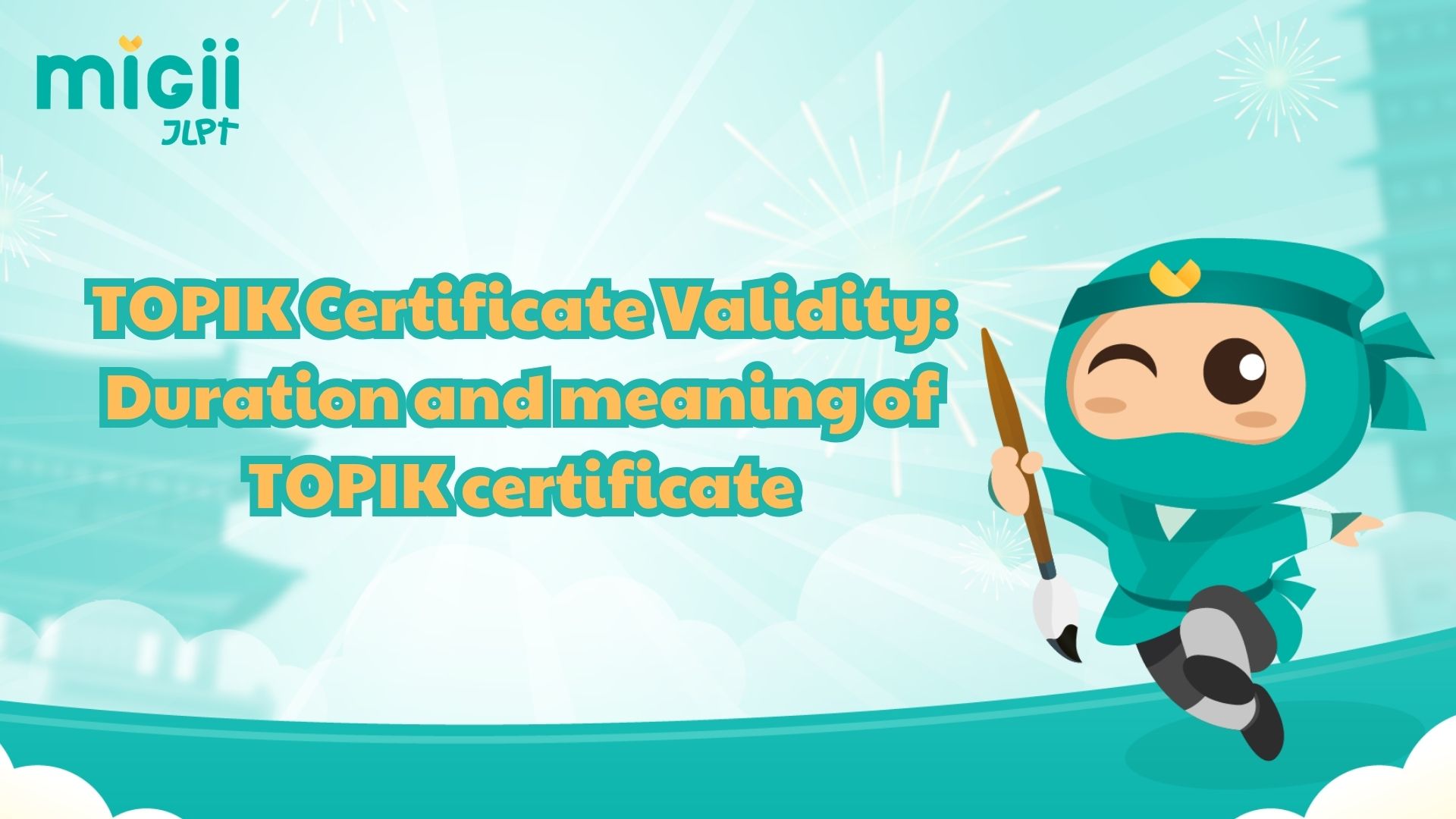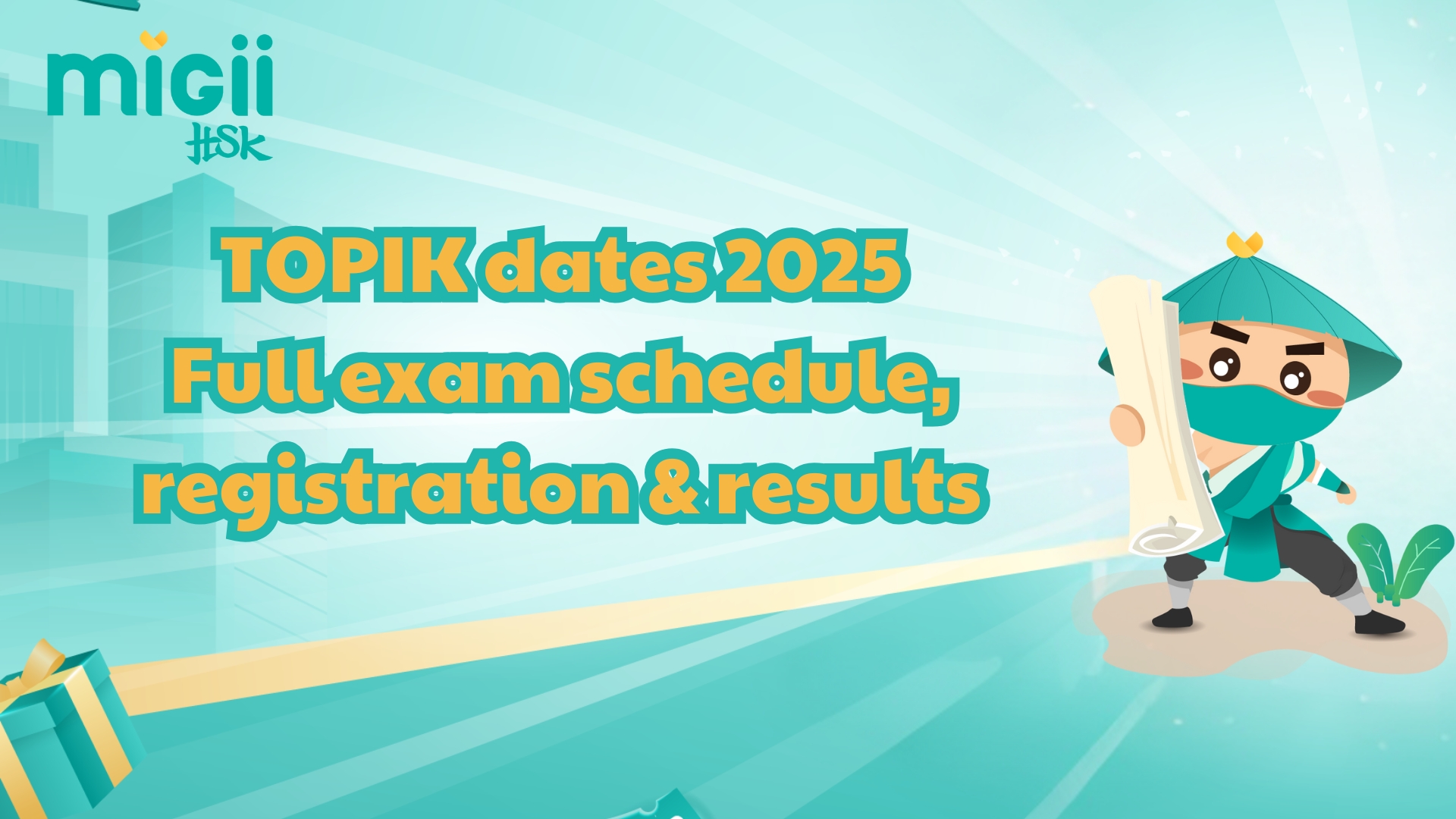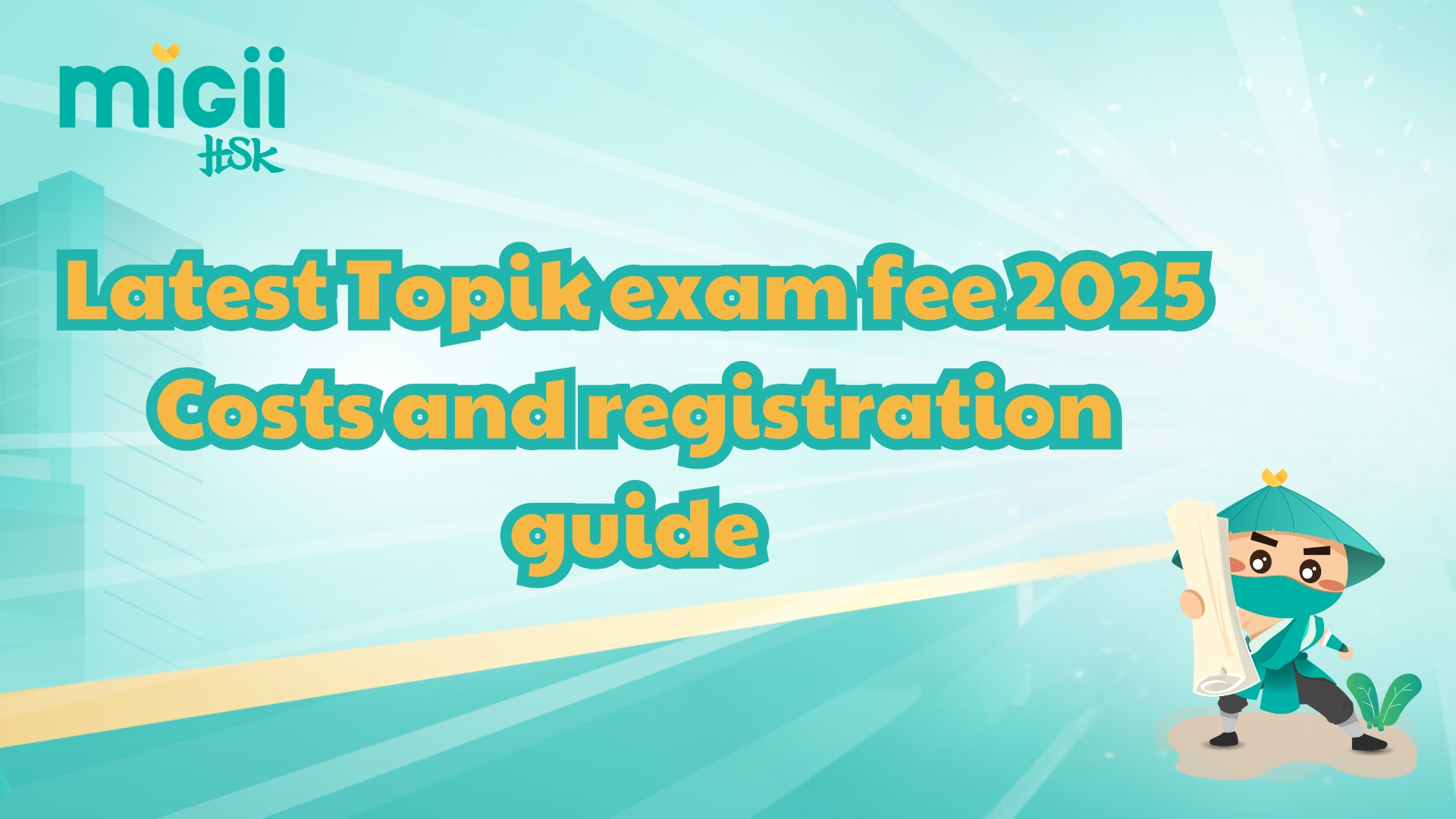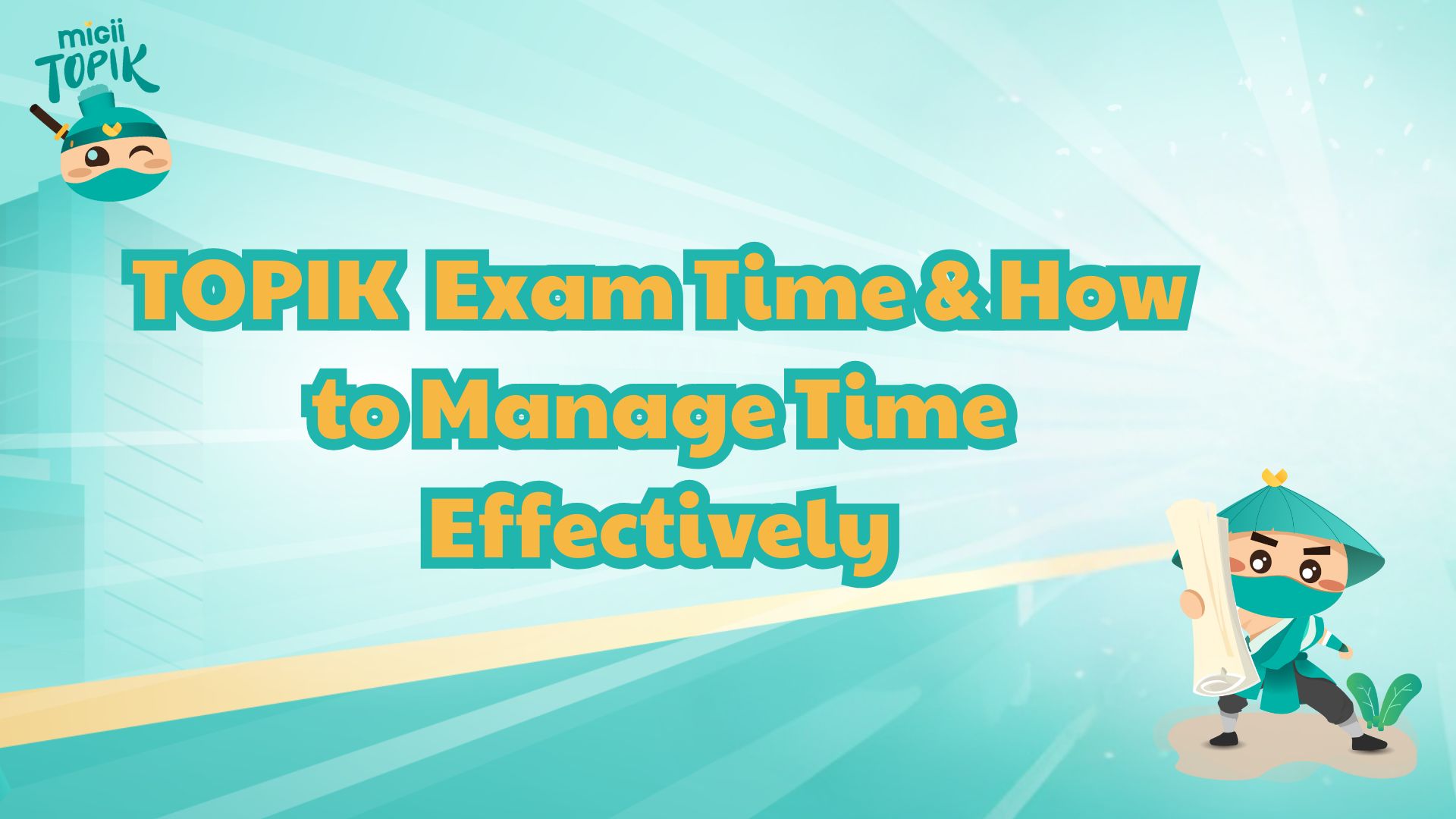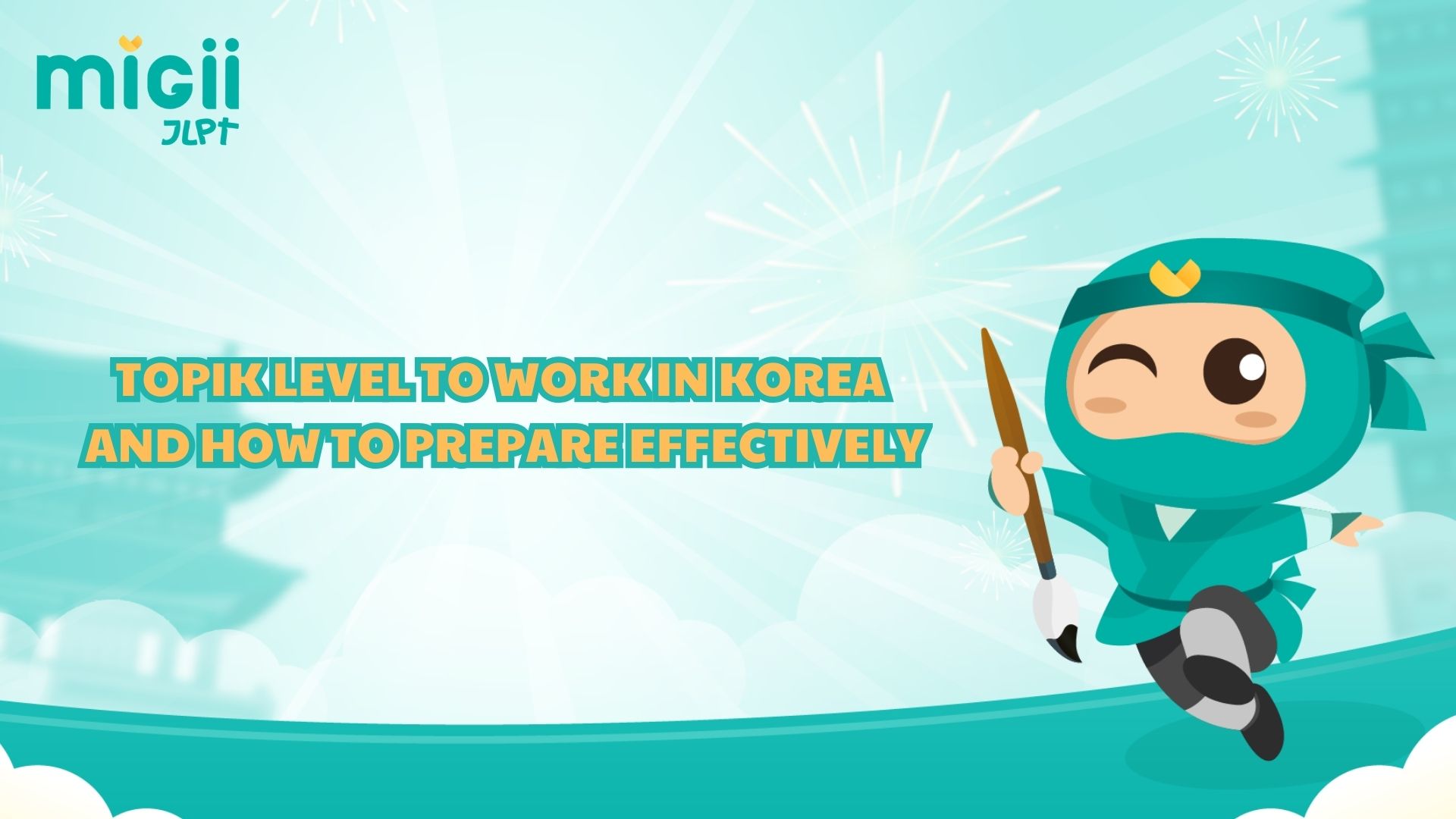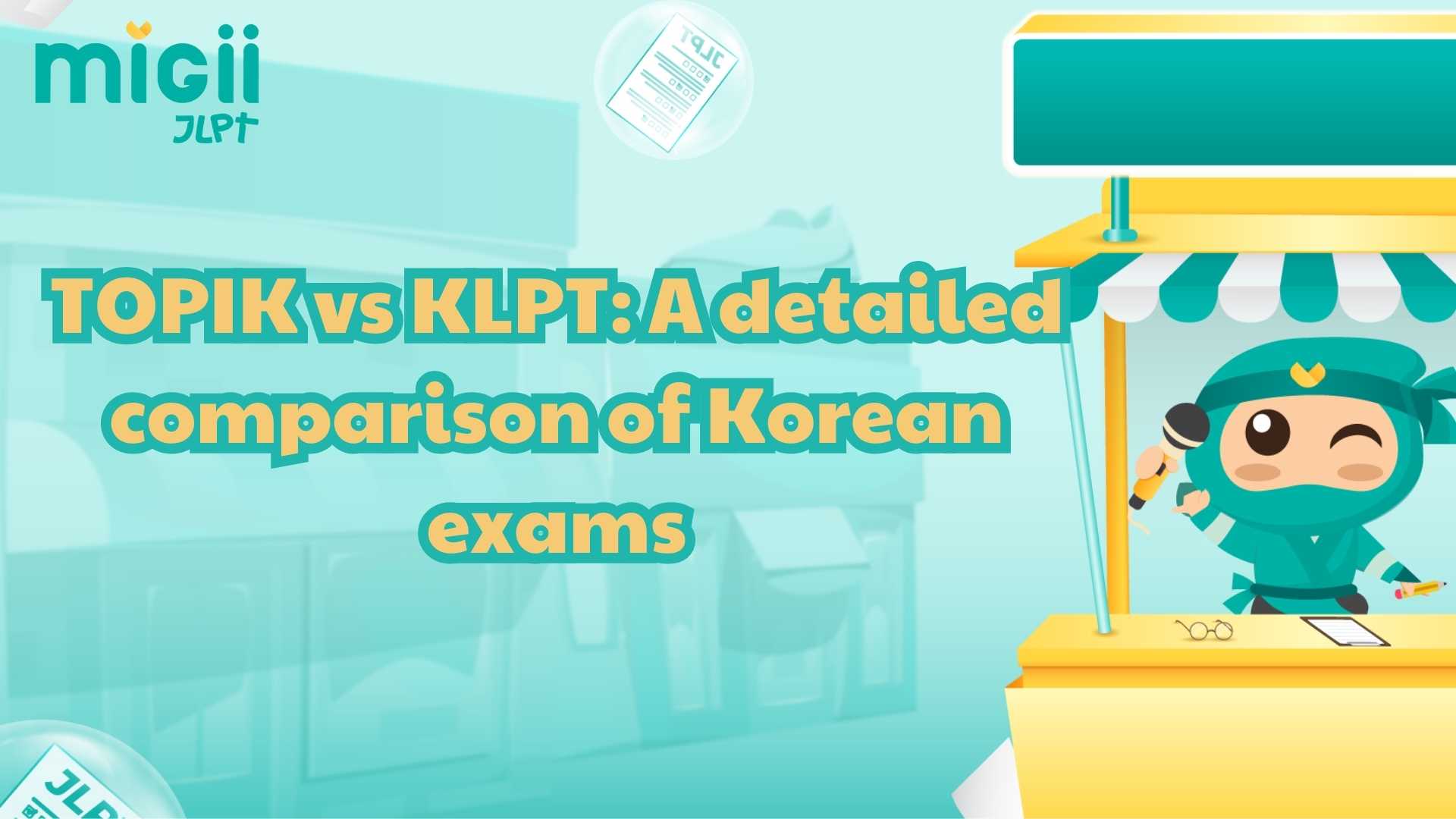Understanding the TOPIK levels explained is the first step for anyone preparing for the Test of Proficiency in Korean. From basic communication at TOPIK 1 to advanced academic fluency at TOPIK 6, knowing what each level requires will help you choose the right learning path. Let’s explore the details of TOPIK levels with Migii and find the best strategy to achieve success.
General Overview of the Korean Level Test
Before diving into the details of individual levels, it’s important to understand what the Korean level test TOPIK is, why it matters, and how its format has evolved over time. This section provides the foundation for learners who are preparing to take the exam.
Definition and Purpose
The TOPIK (Test of Proficiency in Korean) is an official standardized test that measures the language skills of non-native speakers. It evaluates reading, listening, and writing abilities, assigning learners a specific TOPIK level that represents their proficiency.
The exam is widely recognized across academic and professional fields. Korean TOPIK levels are required by many universities in Korea for admission and scholarships, while employers use TOPIK test levels as proof of workplace communication ability. In this way, the TOPIK is not just a language test but a gateway to education, career opportunities, and cultural integration.
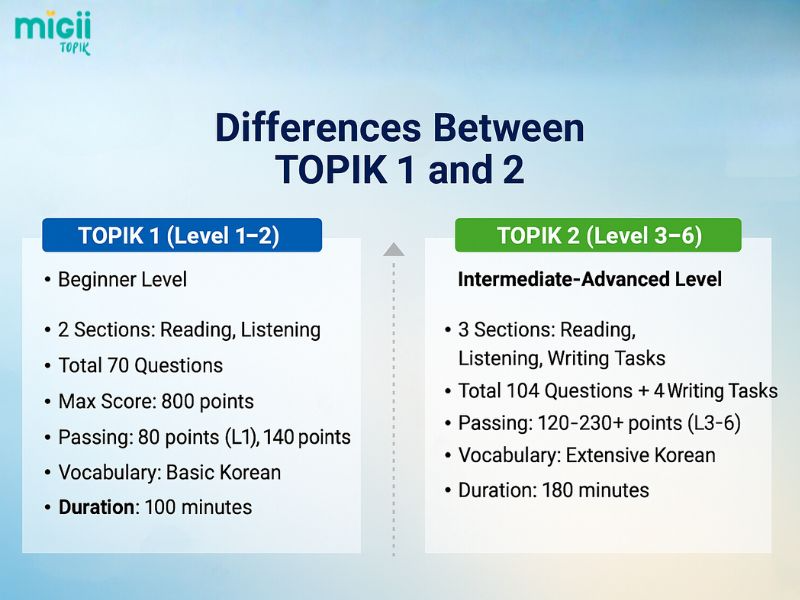
TOPIK is the official Korean proficiency test for global learners
The New TOPIK Format
Since 2014, the New TOPIK format has been in place, designed to simplify the structure of the exam and make its results easier to interpret. Previously divided into Basic, Intermediate, and Advanced stages, the exam was reorganized into two main groups for clarity:
- TOPIK I – Levels 1 and 2, targeting beginners with a focus on basic communication.
- TOPIK II – Levels 3 through 6, aimed at intermediate to advanced learners who need academic or professional fluency. (TOPIK I vs TOPIK II)
This streamlined format ensures that both learners and institutions can quickly understand what each TOPIK exam level represents. It highlights the natural progression from everyday survival skills to advanced academic and workplace communication, making the structure of TOPIK levels explained clearer than ever.
How Many TOPIK Levels Are There?
A common question among learners is: how many levels in TOPIK? Sometimes it is phrased as how many levels of TOPIK are there or how many TOPIK levels are there in total? The answer is straightforward. The TOPIK exam consists of six official levels that measure a learner’s Korean proficiency from beginner to advanced.
The six TOPIK test levels are divided into two categories:
- TOPIK 1: includes Level 1 and Level 2, which focus on basic vocabulary, grammar, and everyday communication.
- TOPIK 2: covers Levels 3, 4, 5, and 6, designed for intermediate to advanced learners who need academic, professional, or near-native fluency.
This structure creates a clear TOPIK levels Korean classification system, ensuring that both students and institutions can easily interpret what each level represents. Whether you are starting with simple daily conversations or aiming for the TOPIK highest level, understanding this framework and the classification of TOPIK exam levels helps you set realistic goals and track your progress effectively.
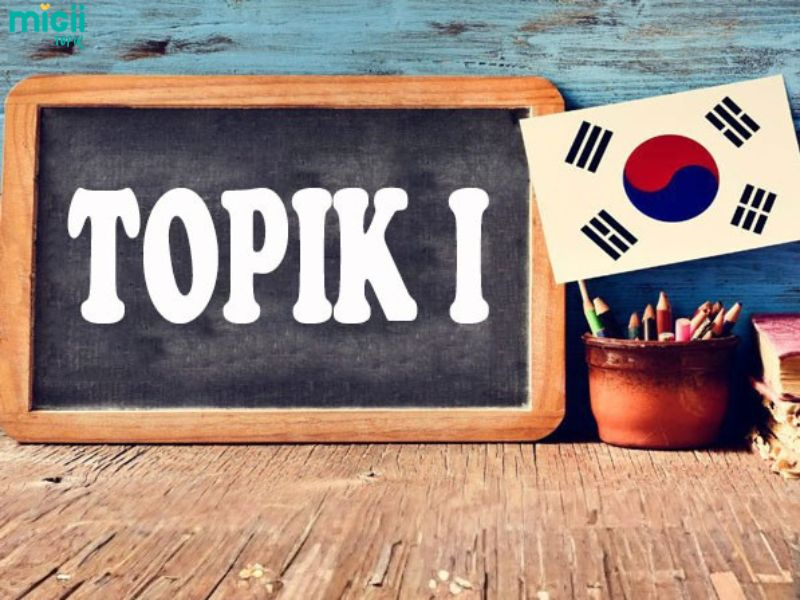
TOPIK exam has six levels split into TOPIK 1 and TOPIK 2
Difference Between TOPIK 1 and 2
To understand the progression of the TOPIK levels, it is essential to compare the two main categories of the exam: TOPIK I and TOPIK II. Each serves a different purpose and evaluates distinct sets of skills, from basic survival communication to advanced academic and professional fluency.
Characteristics of TOPIK 1 (Levels 1 – 2)
TOPIK 1 represents the beginner stages of the exam and includes Level 1 and Level 2. At this level, the test focuses only on listening and reading skills, without a writing section. The content centers on everyday vocabulary, simple grammar, and basic sentence structures.
Learners who pass TOPIK 1 are able to manage simple daily interactions, such as introducing themselves, ordering food, shopping, or asking basic questions. This stage lays the foundation for more advanced language development, giving students the confidence to use Korean in routine social situations.

TOPIK 1 includes Levels 1 and 2 for basic communication
Characteristics of TOPIK 2 (Levels 3 – 6)
TOPIK 2 covers Levels 3 through 6, which range from intermediate to advanced proficiency. Unlike TOPIK 1, this stage includes a writing section in addition to listening and reading. Candidates are expected to produce structured responses and essays, using a broader range of grammar and vocabulary.
The content involves more complex topics such as academic texts, newspaper articles, and professional discussions. Learners at this level must demonstrate the ability to understand idiomatic expressions, analyze information, and express logical ideas both orally and in writing. Achieving higher TOPIK Korean levels (5 or 6) indicates readiness for graduate study, research, or professional employment in Korea.
Key Distinctions
The main difference between TOPIK 1 and 2 lies in their difficulty, structure, and purpose.
- Difficulty: TOPIK 1 measures basic communication, while TOPIK 2 evaluates intermediate to advanced skills.
- Structure: TOPIK 1 has only two sections (listening and reading), whereas TOPIK 2 adds writing to the exam.
- Purpose: TOPIK 1 certifies survival-level communication, while TOPIK 2 certifies readiness for academic study, research, and professional work.
In short, the progression from TOPIK I to TOPIK II reflects a journey from simple, everyday communication to advanced fluency suitable for academic and career success. Understanding this level TOPIK distinction is crucial when setting study goals and preparing for the exam.

TOPIK 1 vs TOPIK 2 highlight differences in skills structure and purpose
Practical Significance of TOPIK Levels
TOPIK levels are not only exam scores but also practical indicators of readiness for academic study and professional work in Korea.
Academic Study in Korea
Many Korean universities require international students to hold a certain TOPIK level for admission. Undergraduate programs often expect Level 3 or 4, as this shows students can follow lectures, complete assignments, and interact in basic academic settings. Without this certification, students may struggle to meet course requirements.
Graduate programs usually demand higher proficiency, typically Level 4 or 5. This level ensures learners can read academic journals, write research papers, and discuss complex ideas. Some competitive programs, particularly in social sciences or humanities, may prefer Level 6 for advanced study.

Universities in Korea require TOPIK levels 3 to 6 for academic study
Employment in Korea
Employers in Korea often use TOPIK results to assess a candidate’s ability to adapt to the workplace. Jobs involving daily communication may accept applicants with Level 3 or 4, which demonstrates sufficient understanding of professional instructions and documents. These levels provide a foundation for basic integration at work.
However, higher positions generally require Level 5 or 6. These advanced levels prove strong communication, cultural adaptability, and professional writing skills. Holding such certification increases opportunities for career advancement, promotions, and greater responsibility in both Korean and multinational companies.
Tips for Preparing for the Korean TOPIK Level Test
Effective preparation for the Test of Proficiency in Korean requires both consistency and the right learning tools. Beginners should focus on building a foundation, while advanced learners need to refine academic and professional language use. To study effectively, consider these approaches:
- For TOPIK 1: Review essential vocabulary and grammar, practice short reading passages, and listen to simple dialogues from everyday life.
- For TOPIK 2: Expand academic vocabulary, strengthen complex grammar, and practice essay writing along with advanced listening exercises such as lectures or news reports.
- Daily immersion: Watch Korean dramas, listen to podcasts, or follow Korean news to improve comprehension and cultural awareness.
- Self-study resources: Combine textbooks with digital tools to simulate the exam and measure progress.
To maximize your results, try learning with Migii TOPIK on both app and web. Migii offers structured practice tests, vocabulary lists, and grammar explanations tailored to each level, helping you track your growth and prepare more effectively. Start practicing with Migii today to reach your desired TOPIK score with confidence.

Prepare for TOPIK with vocabulary grammar writing and daily practice
Frequently Asked Questions (FAQ)
1. What is TOPIK level?
A TOPIK level refers to the proficiency stage assigned to test-takers, ranging from Level 1 (basic communication) to Level 6 (advanced fluency). These TOPIK Korean levels are widely recognized in both academic and professional settings, and achieving the highest TOPIK level demonstrates near-native mastery of the language.
2. What does TOPIK stand for and what is TOPIK meaning?
TOPIK stands for the Test of Proficiency in Korean, the official Korean level test TOPIK that measures language skills of non-native speakers.
3. How many levels of TOPIK are there?
There are six TOPIK levels, divided into TOPIK I (Levels 1 – 2) and TOPIK II (Levels 3 – 6). These are the standard TOPIK test levels used worldwide.
4. What is the difference between TOPIK I vs TOPIK II?
TOPIK I assesses listening and reading for beginners, while TOPIK II adds writing and evaluates higher-level academic and professional skills.
5. What is the highest TOPIK level?
The highest TOPIK level is Level 6, representing near-native fluency, suitable for graduate study, research, or professional employment in Korea.
6. What TOPIK level to study in Korea?
Most universities require at least Level 3 or 4 for undergraduate programs and Level 4 or 5 for graduate programs. Competitive fields may prefer Level 6.
7. Are TOPIK levels recognized internationally?
Yes, TOPIK levels are recognized internationally. The certificate is officially issued by the Korean Ministry of Education and widely accepted by universities for admission and scholarships, by employers for assessing workplace communication, and by government programs for visas and exchanges. For this reason, achieving a high Korean TOPIK level is reliable proof of proficiency both in Korea and worldwide.
Conclusion
In summary, the TOPIK levels provide a clear path from basic communication to advanced academic and professional fluency. Choosing the right level is key to reaching your goals, whether for study, work, or personal growth. Start practicing today with Migii TOPIK, where structured lessons, mock exams, and progress tracking will help you succeed with confidence.
